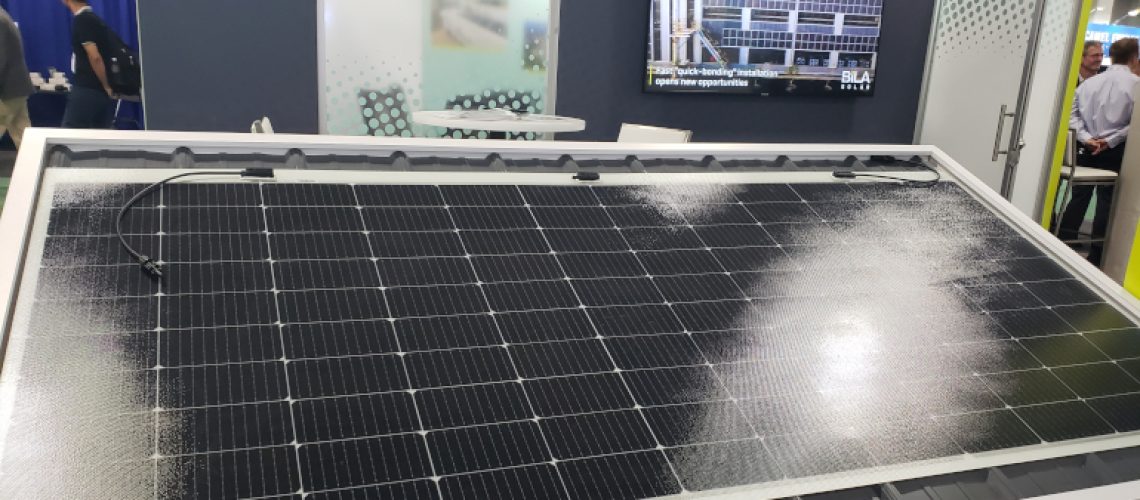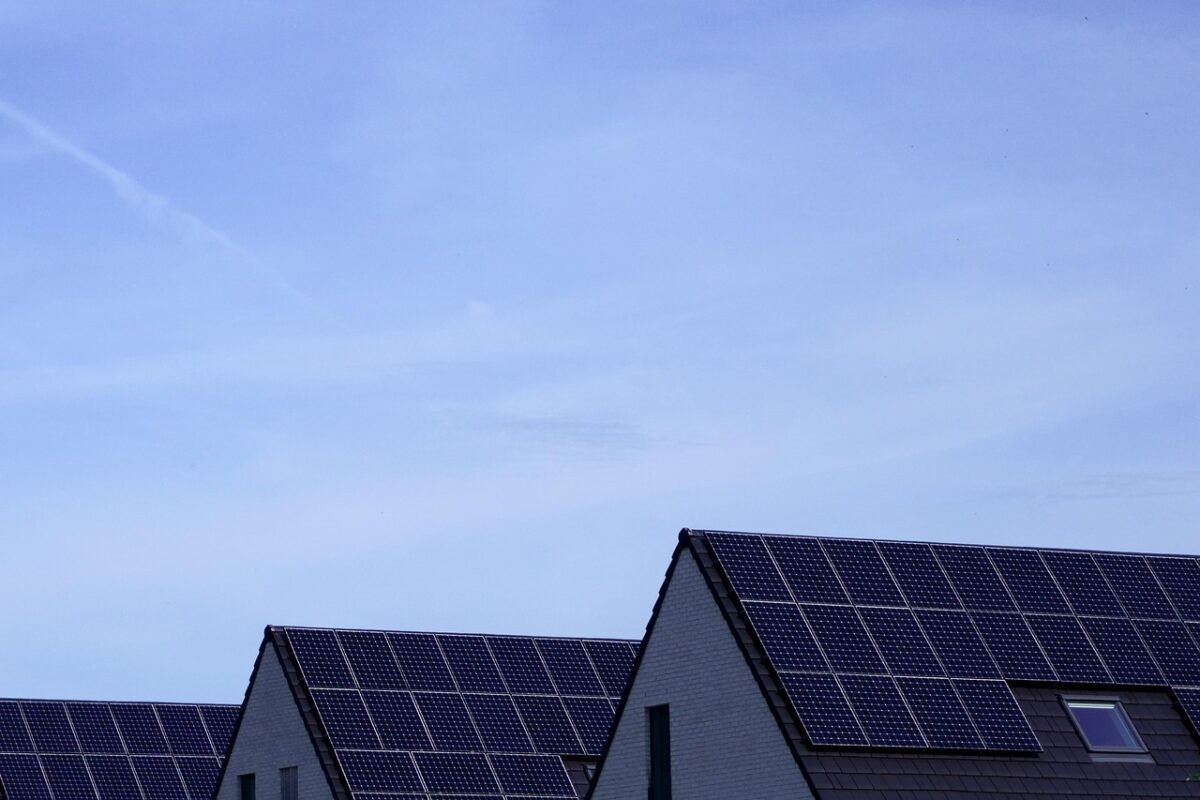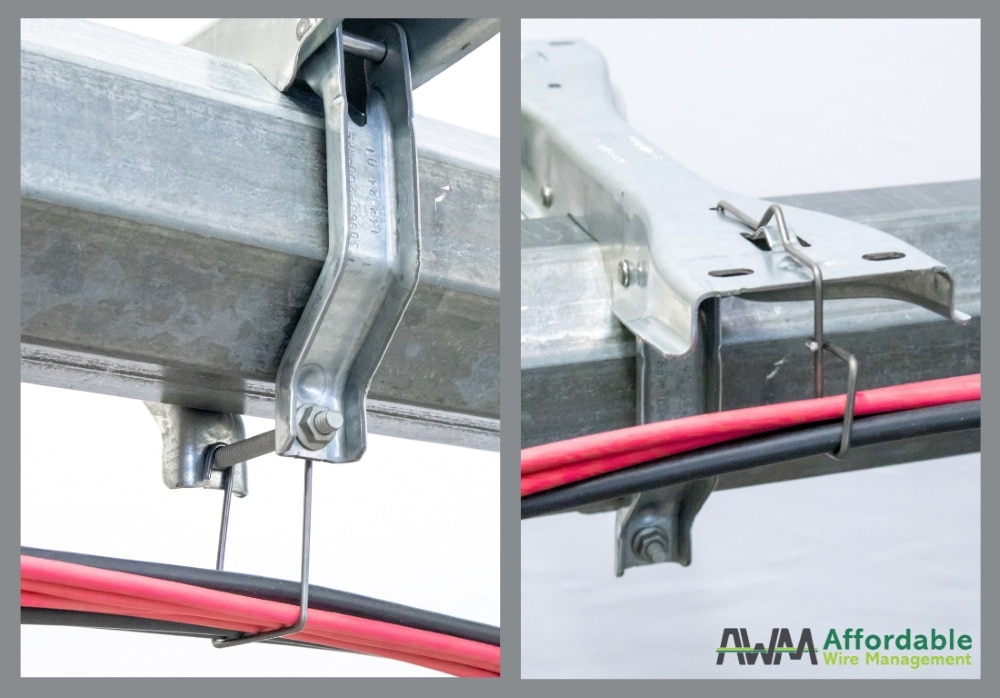Day 1 of the RE+ 2023 tradeshow was a bit maddening for this solar industry reporter. A confusing exhibit hall layout and no wifi or cell service made covering the event in SPW’s traditional social-media-focused style challenging, but the conversations I did have were candid and enlightening. I cover two main product areas for Solar Power World: solar panels and energy storage. Most of my talks with solar panel manufacturers involved their plans for U.S. factories instead of highlighting new models, although everyone seems to be using TOPCon technology now. The residential ESS companies I visited on Day 1 are all about the integrated system — an inverter on top and stackable lithium batteries below.
There is plenty to see at RE+, and I’ll be reporting back on my Day 2 insights. But for now, here are a few highlights from my first day.
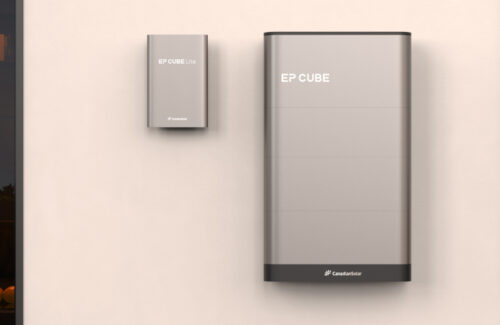
I didn’t get a good photo of this on the show floor, so enjoy the stock image of the EP Cube Lite.
Canadian Solar does it all, and although I was interested in hearing more about the company’s 5-GW solar panel factory starting up in Texas (which is still on track for completion by the end of this year), the EP Cube Lite energy storage system grabbed my attention. For customers interested in participating in grid programs and/or managing time of use (TOU) rates, the EP Cube Lite is a smaller battery system that provides no backup power option. Instead of going full bore with 13 kWh, this system starts at 6.6 kWh and can be scaled larger to fit a homeowner’s energy needs. If the system owner later decides that they want backup power capability, the EP Cube Lite can be updated to the fully featured EP Cube. It’s a lower-cost option for homeowners not wanting to go huge right away.
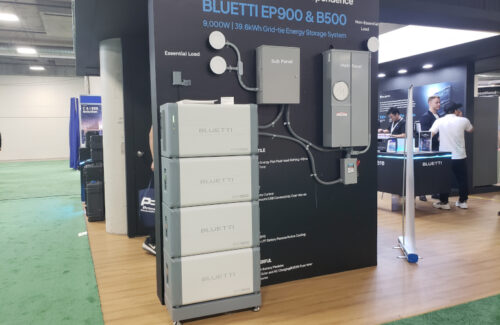
The Bluetti EP900 that can be tied to the main electrical panel.
Mostly known for its portable power stations, Bluetti is going bigger with its LFP battery banks. The EP900 and EP800 were on display at RE+, and both systems can be tied to the main electrical panel. EP900 is grid-connected and can participate in auxiliary grid services, while the EP800 only works as backup. Both are scalable to the customer’s right size. As a company used to selling direct to the customer, these new systems do require certified electrician hookup, so Bluetti is looking for a network of installers in the United States. The Bluetti systems are similar to other residential ESS on the market installation-wise, so no extra training is needed.
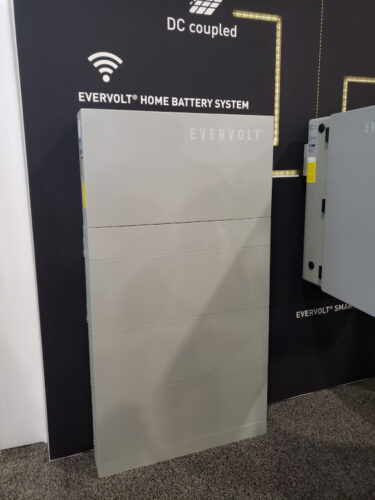
I know, another gray box. But it is sleek and powerful.
Panasonic released two new solar panels for the residential market (with help from Olympic gold medalist Michael Phelps), but it also had on display its updated EverVolt Home Battery System. This new version has a maximum 18-kWh LFP battery, which can be stacked up to 72 kWh. Opposite of Canadian Solar’s “lite” offering, Panasonic’s EverVolt system is big for when homeowners know exactly what they want. The system comes with an integrated inverter and the new SmartBox home energy management device. SmartBox seamlessly switches to the battery backup during a power outage and can interact with the grid any other time. This newest version of the EverVolt battery can be installed indoors or outdoors, mounted to the floor or the wall.
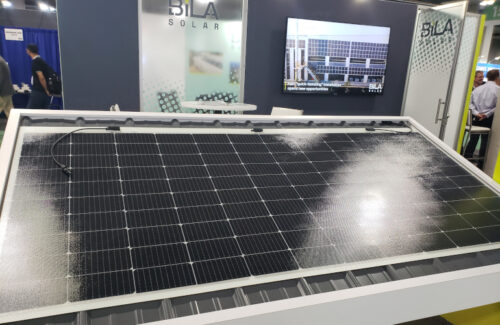
Bila Solar’s lightweight panels would work especially well on standing seam metal roofs and only require an adhesive to stay attached.
I visited with one of the newest U.S. solar panel manufacturers, Bila Solar, which is planning a 1-GW factory in Indianapolis. This company will make glassless, frameless silicon solar panels ideal for commercial rooftops that can’t support significant loads. Mostly consisting of layers of EVA, these panels are very lightweight — I could pick them up with one little hand. Bila Solar thinks it will first find a good customer through commercial real estate channels rather than the traditional solar installer route, but the company is excited about the vast opportunity.
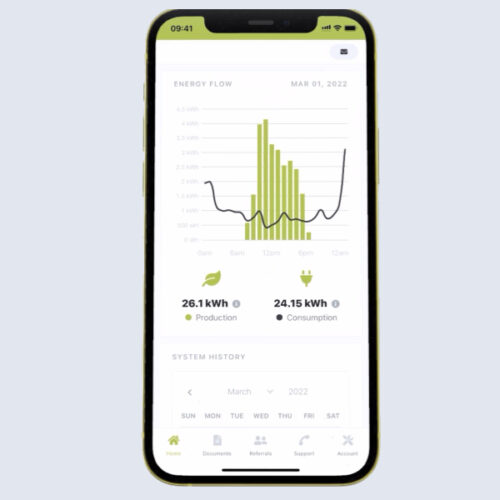
Apps are difficult to illustrate, but Sunvoy’s is a great tool for installers.
Have you looked at Sunvoy yet? This app is a customer-facing portal and a fleet management system for solar installers. Developed by Washington, D.C., installer Ipsun Solar, Sunvoy improves communications between customers and solar installers and increases access to real-time monitoring without having to open a dozen different apps. It’s a really cool white-label system for solar installers built by solar installers. It offers customers a project tracking guide that then morphs into an energy production platform so customers can see how everything is working right in one place. For the solar installation company, the app helps project managers track customer requests, map out maintenance routes and organize priority tasks.


